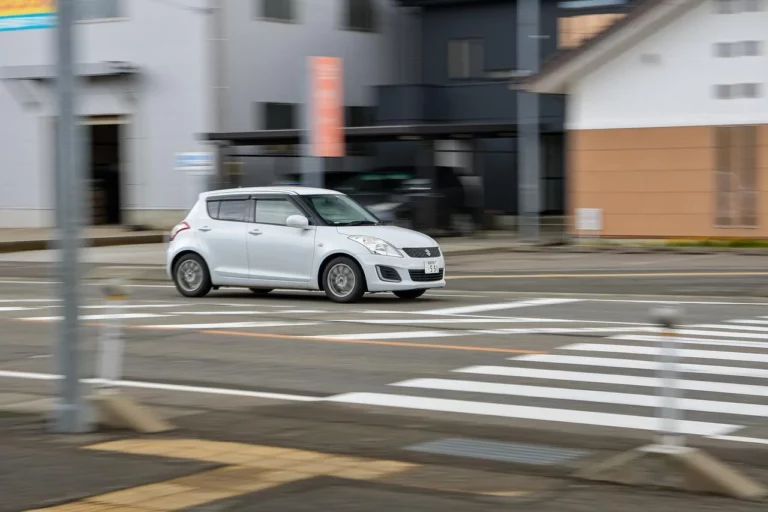Pedestrian Accident Lawyer Boca Raton

When a pedestrian is struck by a vehicle, the outcome can be catastrophic. Victims often face long recoveries, mounting medical bills, and loss of income. Weston & Pape is here to help. Our pedestrian accident lawyer provides dedicated legal support to individuals injured on sidewalks, crosswalks, and roadways throughout Boca Raton. We offer personalized guidance and aggressive representation to hold negligent drivers accountable. Call 561-821-3898 for a free consultation to discuss your case.
Understanding the Duty of Care in Pedestrian Accident Cases
Pedestrian accidents can happen in an instant. Whether someone is crossing a busy intersection, walking through a parking lot, or navigating a sidewalk, a moment of carelessness from a driver can result in devastating injuries. When pedestrians are struck by vehicles, questions of liability come down to one legal principle—duty of care.
Understanding how duty of care applies in pedestrian accident cases is essential for anyone involved in a personal injury claim. In Boca Raton, both drivers and pedestrians have legal responsibilities, and failure to uphold them can affect the outcome of a case.
What duty of care means in pedestrian accidents
Duty of care is a legal obligation to act in a way that does not cause harm to others. In the context of pedestrian accidents, it refers to the responsibility that drivers and pedestrians have to act reasonably and follow traffic laws. If someone breaches that duty and another person is injured as a result, they may be held liable.
For drivers, this means obeying traffic signals, yielding to pedestrians in crosswalks, staying off the phone, and adjusting their behavior in areas with heavy foot traffic. For pedestrians, the duty of care includes using designated crosswalks, obeying signals, and avoiding reckless actions like darting into traffic.
How Florida law treats pedestrian rights and responsibilities
Florida law offers strong protections for pedestrians, especially at marked crosswalks and intersections. Motorists are expected to yield the right of way when a pedestrian is lawfully crossing. In addition, Florida statutes require drivers to exercise due care to avoid hitting pedestrians—even outside of marked crossings—if they are visible and the situation could reasonably have been avoided.
At the same time, pedestrians must also follow traffic laws. This includes waiting for the walk signal at intersections, not stepping into traffic unexpectedly, and avoiding crossing streets in areas where pedestrian access is restricted. When either party violates these rules, they may be considered partially or fully at fault.
Common situations where duty of care comes into play
Pedestrian accidents can occur in many settings, but there are a few scenarios where questions about duty of care frequently arise:
- Marked crosswalks: Drivers must stop when pedestrians are in the crosswalk. Failing to yield here is a common cause of accidents, especially when a driver is turning right on red or speeding through a yellow light.
- Unmarked crossings: While not every intersection has a painted crosswalk, many are still legally considered pedestrian crossings. Drivers must slow down and remain alert for foot traffic.
- Parking lots: These areas can be particularly dangerous due to limited visibility and frequent backing up. Both pedestrians and drivers are expected to proceed cautiously.
- Sidewalks and shoulders: Vehicles are not allowed to drive on sidewalks unless entering or exiting a driveway. When they do, they must yield to anyone walking in the path.
- School zones and residential areas: Extra caution is required in areas where children or large numbers of pedestrians are likely to be present.
In each of these settings, the concept of duty of care helps determine whether a driver or pedestrian acted reasonably under the circumstances.
How breach of duty is proven in pedestrian accident claims
Proving that someone breached their duty of care involves showing that they acted in a way that a reasonable person would not have under the same conditions. This could include actions like:
- Running a red light
- Failing to yield at a crosswalk
- Driving while distracted
- Speeding in a school zone
- Crossing a street outside a crosswalk in heavy traffic
In a personal injury case, evidence is key. This might include witness statements, traffic camera footage, photos from the scene, and police reports. If the driver received a citation, that can also support the claim.
Accident reconstruction experts may be brought in to help determine fault. They analyze tire marks, vehicle damage, and traffic patterns to build a clearer picture of how the incident occurred.
Comparative negligence and shared fault in Florida
Florida uses a modified comparative negligence rule. This means that a pedestrian can still recover compensation if they were partially at fault, as long as they are not found to be more than 50% responsible for the accident. However, their compensation will be reduced in proportion to their level of fault.
For example, if a pedestrian crosses outside of a crosswalk but the driver was speeding and texting, both parties might share fault. If the pedestrian is found to be 30% at fault and their total damages are $100,000, they would still be eligible to recover $70,000.
This system aims to account for real-world situations where accidents involve mistakes on both sides. It also makes clear why it’s important to investigate each accident thoroughly rather than assume one party is entirely to blame.
Why Legal Help is Important for Your Case
Pedestrian accidents often result in serious injuries, including broken bones, head trauma, and spinal damage. Victims may face long recovery periods, high medical bills, and lost income. At the same time, proving fault can be complicated.
Insurance companies may try to place blame on the pedestrian to minimize payouts. They might argue that the pedestrian crossed outside a crosswalk, wore dark clothing at night, or failed to pay attention. An experienced personal injury attorney can help counter these arguments by gathering evidence, speaking with witnesses, and working with experts to demonstrate the driver’s negligence.
In Boca Raton, where traffic congestion and foot traffic frequently intersect, it’s especially important to work with someone familiar with local laws and conditions. A lawyer can guide you through the legal process, help you understand your options, and fight for fair compensation.
What to do after a pedestrian accident
If you’re involved in a pedestrian accident, your first priority should be seeking medical attention—even if injuries don’t appear serious at first. Some injuries take time to show symptoms, and early documentation can be vital for a future claim.
After that, try to:
- Report the accident to the police
- Take photos of the scene, if you’re able
- Get contact information from any witnesses
- Avoid discussing fault at the scene
- Speak to a personal injury lawyer before giving a statement to an insurance adjuster
These steps can help protect your rights and improve your chances of building a successful case.
Duty of care plays a central role in determining responsibility in pedestrian accident cases. In Boca Raton, both drivers and pedestrians have clear legal obligations designed to keep everyone safe. When those duties are ignored and someone is hurt, the injured party has the right to pursue compensation.
Whether the driver ran a red light or the pedestrian crossed in the wrong place, each case deserves a full investigation. With the help of a skilled attorney, victims can better understand their rights and take the steps needed to recover physically, emotionally, and financially.
Let a Personal Injury Attorney Guide You After a Pedestrian Accident
Pedestrian accidents can lead to serious injuries that affect every part of your life. At Weston & Pape, we understand the physical, emotional, and financial toll these incidents can take. A dedicated personal injury attorney from our Boca Raton office can help you seek justice and fair compensation. To get started with a free consultation, call us at 561-821-3898 and speak with someone who’s ready to fight for your recovery.

 Call Us Today - It's Free
Call Us Today - It's Free